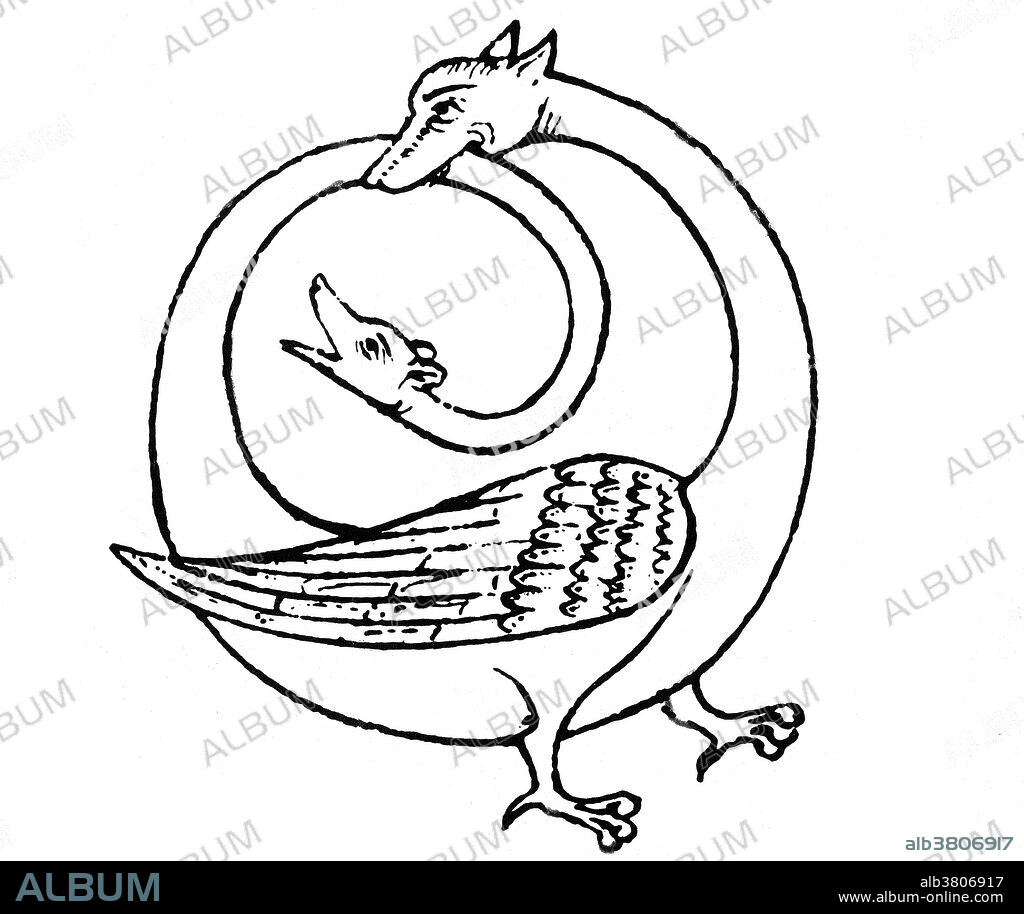alb3806917
Amphisbaenae, Legendary Creature

|
Añadir a otro lightbox |
|
Añadir a otro lightbox |



¿Ya tienes cuenta? Iniciar sesión
¿No tienes cuenta? Regístrate
Compra esta imagen.
Selecciona el uso:

Título:
Amphisbaenae, Legendary Creature
Descripción:
Ver traducción automática
Amphisbaena is a mythological ant-eating serpent with a head at each end. According to Greek mythology, the amphisbaena was spawned from the blood that dripped from the Gorgon Medusa's head as Perseus flew over the Libyan Desert with it in his hand. Cato's army then encountered it along with other serpents on the march. Amphisbaenae fed off of the corpses left behind. The amphisbaena has been referred to by the poets, such as Nicander, John Milton, Alexander Pope, Percy Bysshe Shelley, Alfred, Lord Tennyson, and A. E. Housman, and the amphisbaena as a mythological and legendary creature has been referenced by Lucan, Pliny the Elder, Isidore of Seville, and Thomas Browne, the last of whom debunked its existence. Medieval and later drawings often show it with two or more scaled feet, and feathered wings or a horned, dragon-like creature with a serpent-headed tail and small, round ears, while others have both necks of equal size so that it cannot be determined which is the rear head.
Crédito:
Album / Science Source / New York Public Library
Autorizaciones:
Modelo: No - Propiedad: No
¿Preguntas relacionadas con los derechos?
¿Preguntas relacionadas con los derechos?
Tamaño imagen:
4200 x 3532 px | 42.4 MB
Tamaño impresión:
35.6 x 29.9 cm | 14.0 x 11.8 in (300 dpi)
Palabras clave:
ANIMAL • ARTE • BESTIA • BICEFALO • BLANCO Y NEGRO • CREATURE • CRIATURA • CUENTO POPULAR • DIBUJO • FAMOSA • FAMOSO • FOLKLORE • GRABADO EN MADERA • GRABADO • GRIEGO • HISTORIA • HISTORICO • ILUSTRACION • IMAGINARIO • IMPORTANTE • LEGENDARIO • MÍTICO • MITO • MITOLOGICA • MITOLÓGICO • MONSTER • MONSTRUO • OBRA DE ARTE • PLANCHA DE MADERA • SERPENTINA • XILOGRAFIA
 Pinterest
Pinterest Twitter
Twitter Facebook
Facebook Copiar enlace
Copiar enlace Email
Email
